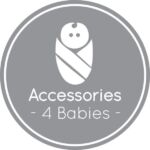How to Promote Language at Home – Featuring The Speech Teacher
How to Promote Language at Home
First and foremost, I know that you, as parents of little ones, are the busiest humans on the planet. So my goal is to incorporate speech and language activities into your everyday routine and make things quick, simple, and natural. These suggested activities are simply a starting point and are meant to be interchangeable. If an activity feels good, try it. If it feels awkward or tricky, skip it!
Getting Dressed Activities:
You name it: When you’re getting your little one dressed, you can turn it into a multisensory learning experience. As you are putting on a clothing item (diaper, shirt, pants), name that item (and ONLY that item) out loud. When you do that, your child sees, touches, smells and hears that item – all at the same time.
Use simple language: For example, “put on” and “take off” may be 2 phrases that you work on during dressing time. These 2 phrases expose your child to a 2-word phrase: action words (put & take), and spatial words (on & off). Your child experiences these words within the context of dressing, which enhances the learning.
Be descriptive: Clothing items come in a variety of colors, textures, sizes, lengths, and shapes. That gives you so many things to talk about! Depending on your child’s level, you could do one of the following: label & teach the descriptor (“blue”); increase their phrase length (they say “blue” and you say, “blue shirt”); ask a question (“what color is your shirt?”); or have them follow a direction (“give me blue shirt”).
“Tubby Time” Activities:
Body parts: As you wash your child’s body parts, label them as you go. Focus on 2-4 at each bath and don’t move on until your little one is able to label (say) it or identify (touch) it. Maybe you sing “Head, Shoulders, Knees & Toes” and you take your child’s hands to touch each body part as you sing. I always do a “slow review” after the song. That is, we go back and touch our head, our shoulders, knees, and toes slowly and simply.
Feel it out: The bath is a sensory experience and I like to focus on sensory words for this reason. Practice “wet” vs. “dry” as you go in and out of the bath. Try “fast” vs. “slow” as you slosh the water. Use “big” vs. “small” as you compare your body to theirs (e.g. “big hand” and “small hand”)
Bubbles, bubbles everywhere! The bath can be a time of great imagination and play. Whether you have a million bath toys or none, get creative! At the very least your baby can be popping soap bubbles. Bubbles are amazing because the words “bubble” and “pop” are easy first words. You can also practice “more,” which is a great first word that can be used for a variety of purposes. Bubbles also go “up” and “down,” which are easy concepts for your child to see, experience, and learn in the bath.
Meal Time Activities:
Let’s talk about food: Food is a motivating tool for a lot of kids and you can really build vocabulary here. If your child is watching you, verbally label all food items as you prepare the meal and throughout the meal experience. You can even use some gentle withholding. For example, if your child points to the cookie, you hold the cookie and label it simply, “cookie” and try not to give the cookie until your child attempts to label it back to you…but remember to give in once an attempt has been made!
It’s your choice: Meals are a good time to present choices. You can pick 2-3 items that are appropriate for the meal and have your child pick the one he/she wants to eat. If your child is not yet verbal, simply have them point to the wanted item when you present the choices. Just remember to also provide a simple label for more complex labels – for example, your baby may not say “spaghetti” but you could work for “noodle” or “pasta” or “o’s” if it’s spaghetti o’s.
Play Time Activities:
Read with me: Picture books are a great way to connect visuals with language. Start with simple books that have 1 picture per page. Point with your finger to the picture and say a 1-word label (“train”). To test your child’s comprehension, say, “show me train” and have him/her point to the picture. Practice labeling items in the book by pointing to the item, saying the label and then pausing to look at the child to see if they are ready to attempt the imitation.
You’re an animal: It’s easier for your child to make animal sounds than words. For example, they may pick up a cow and say, “moo” before they label “cow.” So, provide your child with both the label and sound when showing he/she an animal (e.g. “cow” “moo”). You can also practice questions by asking, “what does the cow say?” and having your child make the sound. Once they have both the label and the sound, ask, “Who says moo?”
I SPY: This is a classic game because it is fun, and more importantly, it works! Start the game by identifying something that you spy, “I spy a truck,” and have your child identify that item by pointing or reaching toward the item. Remember: your child has to first identify an item before he/she can label You can then move on to simply giving hints: “I spy something yellow” or “I spy something big” to start introducing some descriptive concepts like color and size. Your child is ready to be the spy when he/she is at the 1-word level. You can start by saying the carrier phrase, “I spy…” and then let them fill in what they spy using their own 1-word label (e.g. “baby” “cheese” “cat” etc.) *A carrier phrase is usually 3ish words that stay the same and only the last word changes. They help children become exposed to common sentences. For example: “I want…” “I see a…” etc.
Get in touch!
Email: thespeechteacher123@gmail.com
Facebook: https://www.facebook.com/thespeechteacher123
Instagram: https://www.instagram.com/thespeechteacher/
“This was originally posted on Teacher Types” with this link: http://www.teachertypes.com/
Stockists





